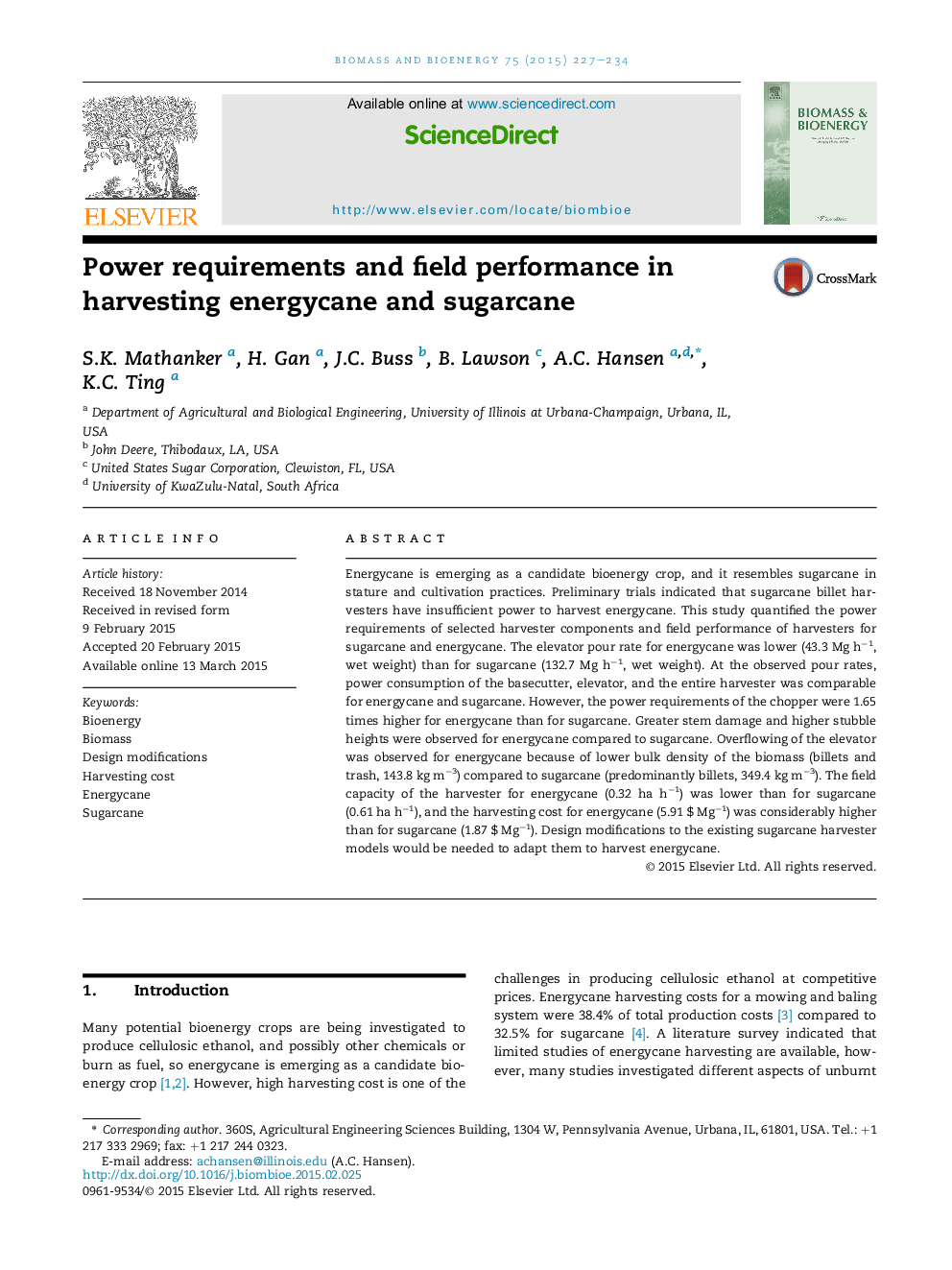| Article ID | Journal | Published Year | Pages | File Type |
|---|---|---|---|---|
| 676753 | Biomass and Bioenergy | 2015 | 8 Pages |
•The elevator pour rate for energycane was lower (43.3 Mg h−1) than for sugarcane (132.7 Mg h−1).•The field capacity for energycane (0.32 ha h−1) was lower than for sugarcane (0.61 ha h−1).•The harvesting cost for energycane (5.91 $ Mg−1) was higher than for sugarcane (1.87 $ Mg−1).•Design modifications to the existing sugarcane harvester designs would be needed for adapting them to harvest energycane.
Energycane is emerging as a candidate bioenergy crop, and it resembles sugarcane in stature and cultivation practices. Preliminary trials indicated that sugarcane billet harvesters have insufficient power to harvest energycane. This study quantified the power requirements of selected harvester components and field performance of harvesters for sugarcane and energycane. The elevator pour rate for energycane was lower (43.3 Mg h−1, wet weight) than for sugarcane (132.7 Mg h−1, wet weight). At the observed pour rates, power consumption of the basecutter, elevator, and the entire harvester was comparable for energycane and sugarcane. However, the power requirements of the chopper were 1.65 times higher for energycane than for sugarcane. Greater stem damage and higher stubble heights were observed for energycane compared to sugarcane. Overflowing of the elevator was observed for energycane because of lower bulk density of the biomass (billets and trash, 143.8 kg m−3) compared to sugarcane (predominantly billets, 349.4 kg m−3). The field capacity of the harvester for energycane (0.32 ha h−1) was lower than for sugarcane (0.61 ha h−1), and the harvesting cost for energycane (5.91 $ Mg−1) was considerably higher than for sugarcane (1.87 $ Mg−1). Design modifications to the existing sugarcane harvester models would be needed to adapt them to harvest energycane.
